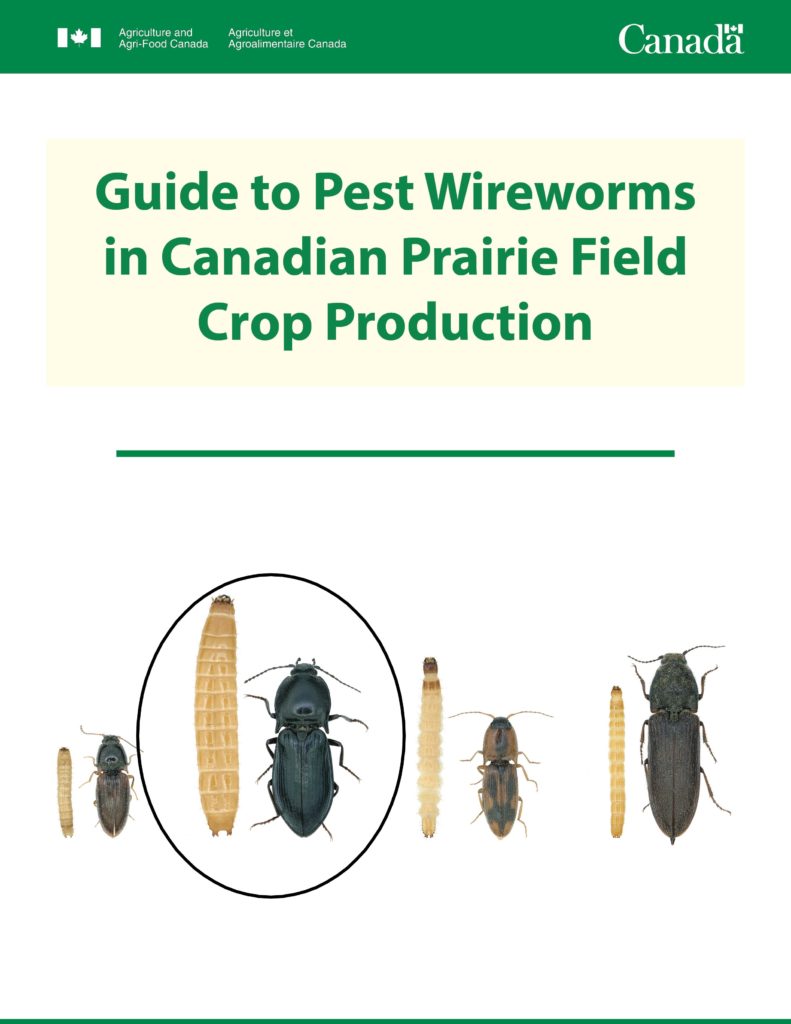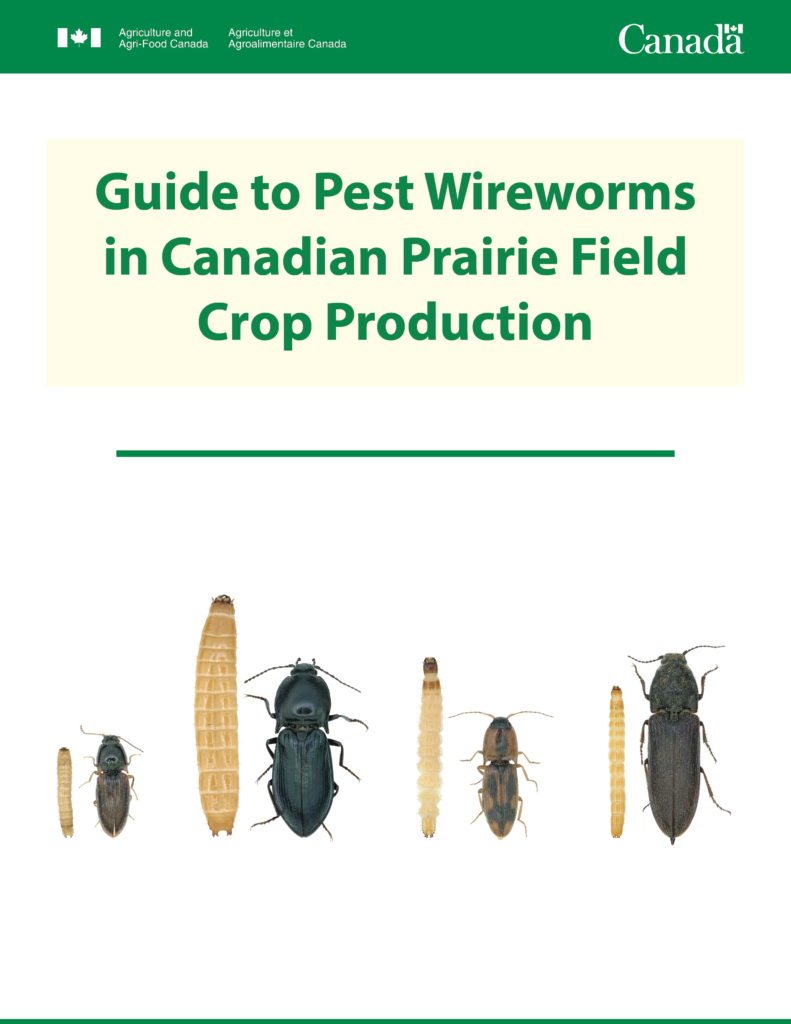Continuing our series on Prairie wireworms, this week we highlight the Prairie grain wireworm, Selatosomus aeripennis destructor.

This species is native to the Prairies and is the second most abundant wireworm in Prairie crop fields, but it likely causes the most damage. This wireworm is big and beefy, it grows up to 23 mm long when mature and has a stout build. Its aggressive feeding style can destroy 10 times as many seeds as its cousin, Hypnoidus bicolor, a species that is often found together within the same fields.

species. Selatosomus aeripennis destructor (left) and
Hypnoidus bicolor (right). Photo: W. van Herk, AAFC Agassiz . Photo taken from the Pest Wireworm Guide
Interestingly, click beetles of this species rarely fly, they mostly walk to find mates and choose locations to lay eggs. A new pheromone has recently been discovered by researchers at Simon Fraser University and AAFC that can be used to attract male beetles. This pheromone will help monitoring efforts.
AAFC has recently released a new field guide on Prairie pest wireworms. It has information on biology, monitoring and management and research on wireworms on the Prairies.
Free digital copies in both official languages can be downloaded at these links.
See this week’s wireworm information in the free, downloadable guide: English ; French


Did you know?
Prairie grain wireworm has a closely-related subspecies called Puget sound wireworm (Selatosomus aeripennis aeripennis). This species looks almost identical to Prairie grain wireworm and can be a pest in the Aspen Parkland Ecoregion.
Reference:
Gries, R., van Herk, W., Alamsetti, S.K., Catton, H., Meers, S., Otani, J., Gries, G. (2022) (Z,E)-a-Farnesene – sex pheromone component of female click beetle Selatosomus aeripennis destructor (Brown) with intra- and inter-sexual communication function. Entomologia Experimentalis et Applicata. 170:344-351. https://doi.org/10.1111/eea.13142
